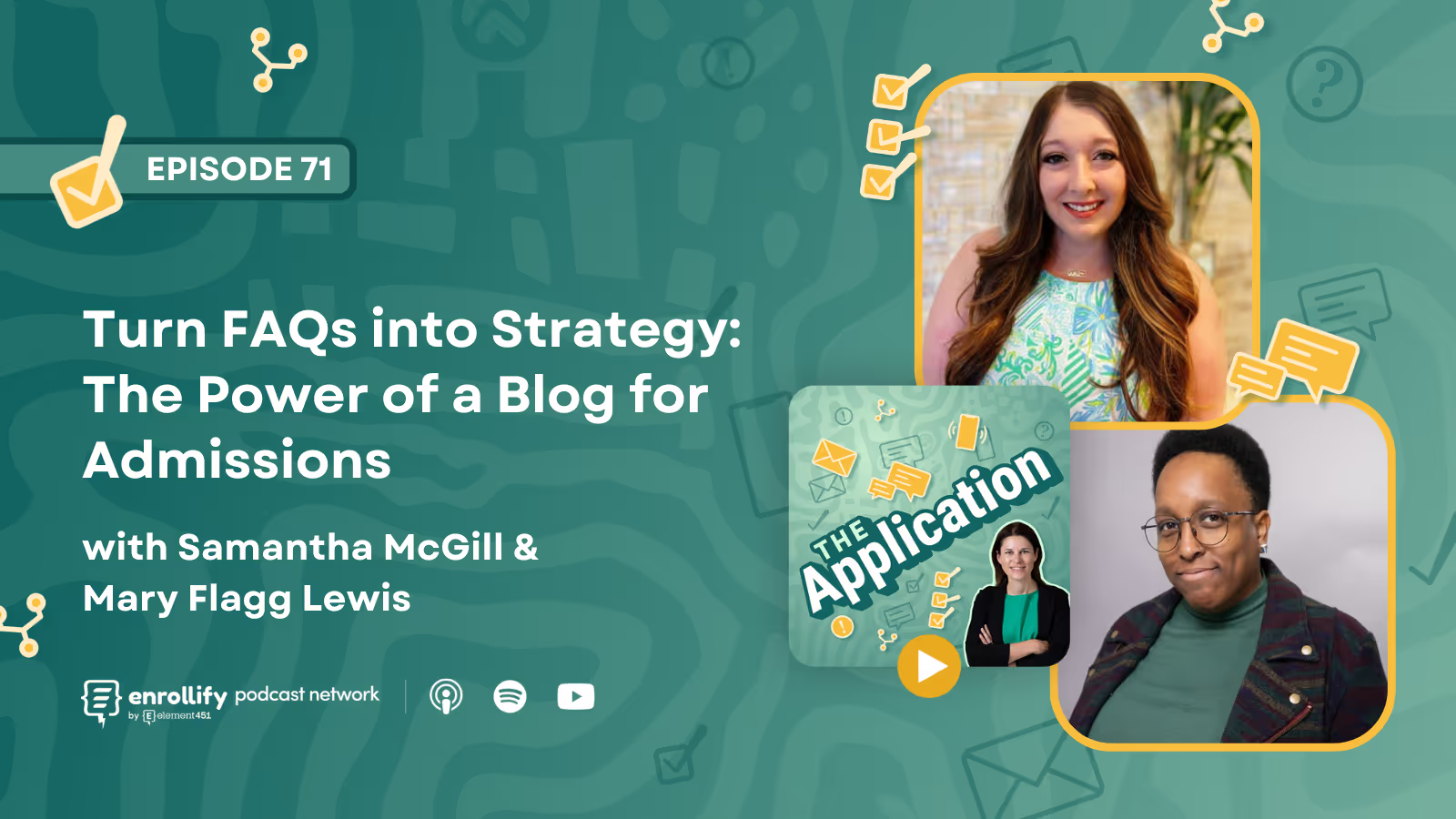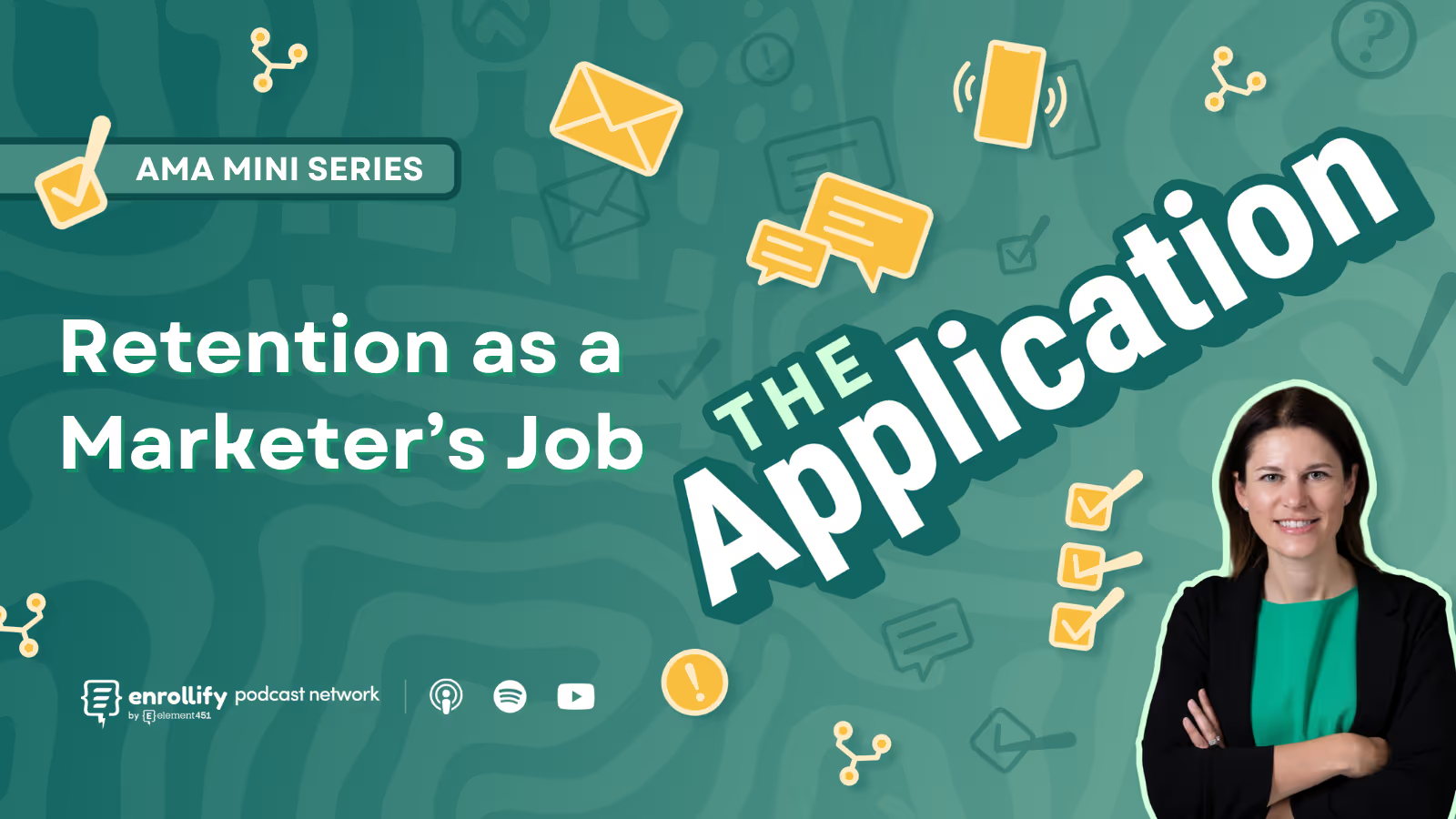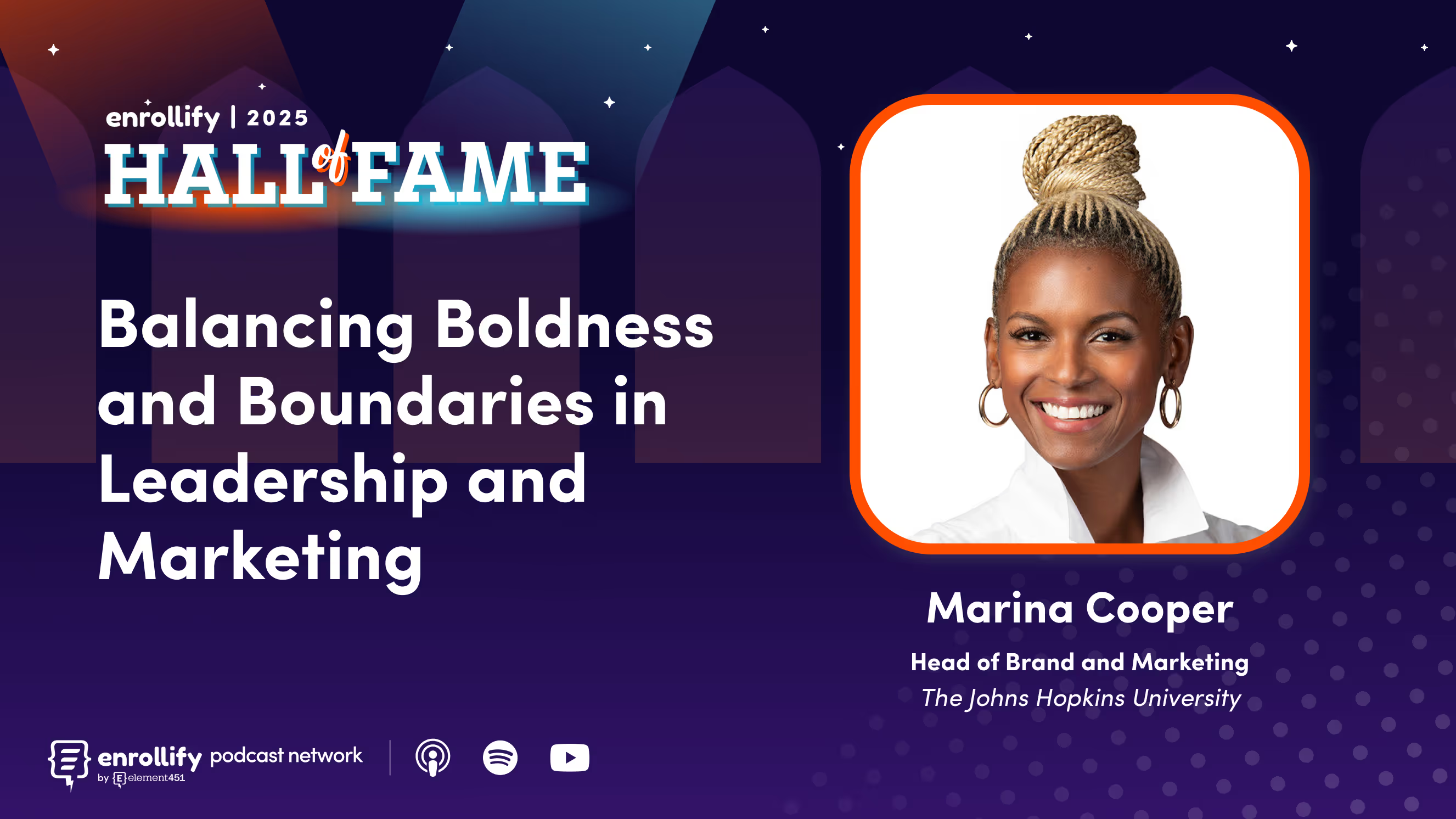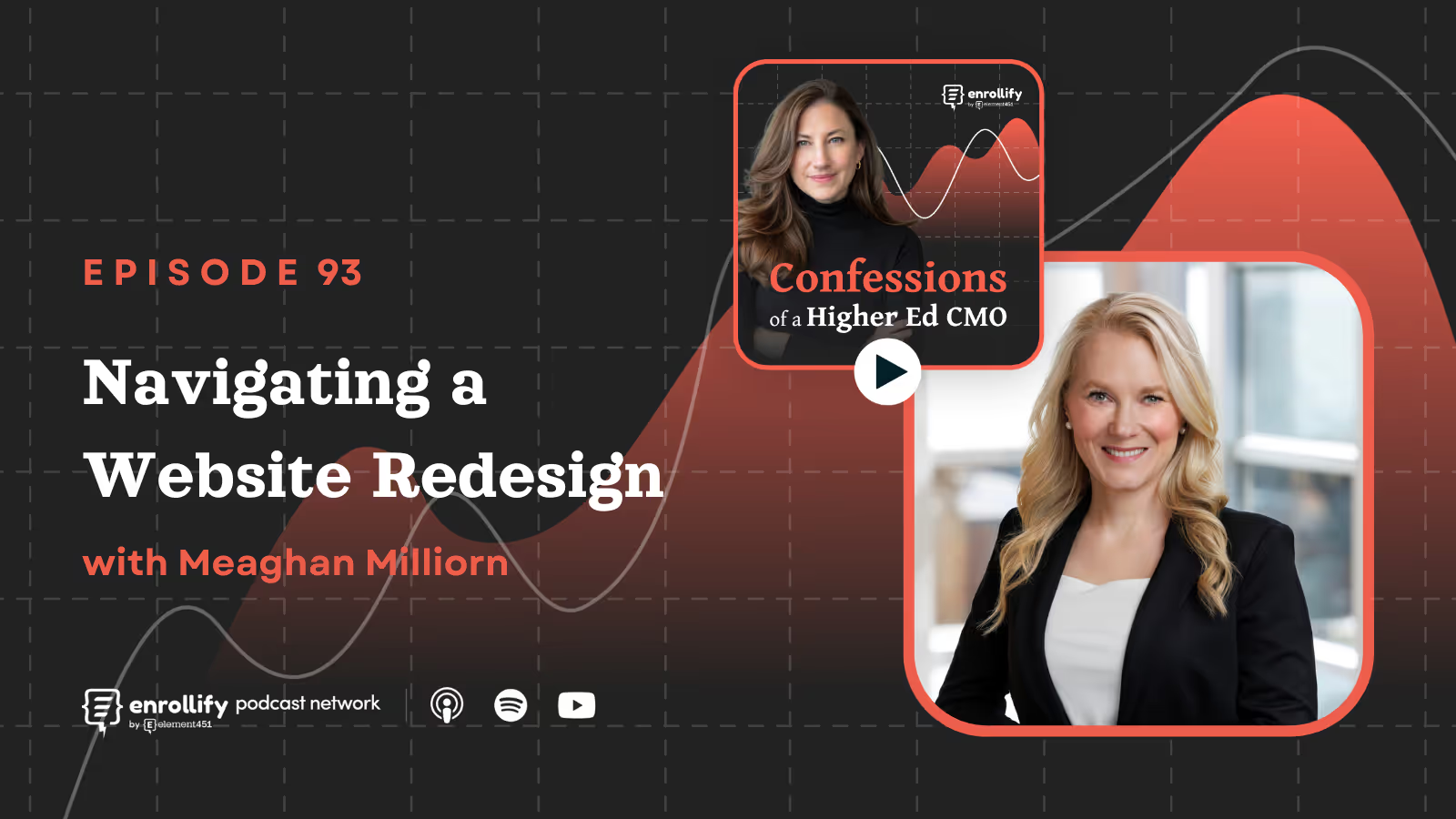About the Episode
Got a story to tell? An innovative idea to share? Fill out our guest nomination form and let's chat!
About the Episode:
What happens when a university blog stops talking about itself and starts answering the real questions students are asking? In this episode, Allison sits down with Mary Flagg Lewis and Samantha McGill from the University of Pittsburgh to explore how Pitt’s blog evolved from a simple FAQ hub into a powerful, student-centered content strategy. You’ll hear how they use data, AI, and student personas to craft effective posts and why their most popular blog entry wasn’t what they expected.
Join us as we discuss:
- [3:43] How to balance helpful content with subtle brand messaging
- [16:36] How to use AI for messaging and tone
- [20:13] Why it’s important to track every interaction, every time
What is Pitt’s admissions blog, and who is it for?
Originally launched as a resource for rising juniors, Pitt’s admissions blog now covers topics like “What is rolling admissions?”, “How to prep for campus tours,” and “Understanding financial aid.” It’s designed to be helpful regardless of whether a student ends up applying to Pitt—positioning the university as a trusted advisor early in the college search process.
How does Pitt decide what topics to cover?
It starts with listening. The team mined call center transcripts, email inquiries, and survey data to identify recurring questions. They then prioritize topics based on frequency, relevance, and gaps in their current content ecosystem. Persona research further refines the strategy by identifying what matters most to different student segments, including international and pre-med prospects.
Why is the content so intentionally student-first and not Pitt-centric?
Mary and Samantha want students to feel guided, not sold to. The blog tackles universal questions about admissions and college planning that are relevant across institutions. By providing value first, Pitt creates brand affinity and positions itself as a helpful partner in the process—not just another university selling itself.
How do they balance brand messaging with neutral advice?
While Pitt might be the one offering the advice, the tone and positioning stay neutral. For example, they explain how rolling admissions works—not just Pitt’s version of it. This builds credibility while subtly communicating Pitt’s values and culture through tone and transparency.
Where does this content sit in the recruitment funnel?
The blog kicks off Pitt’s top-of-funnel engagement efforts each January, targeting juniors. The strategy includes a personalized video, emails, and social touchpoints that introduce students to key college search questions. As the year progresses, content becomes more Pitt-specific, nudging students toward campus visits and application starts.
How does Pitt use AI in their content strategy?
Both Mary and Samantha use tools like ChatGPT and Gemini to brainstorm subject lines, rephrase messages for different personas, and generate topic ideas. Importantly, they treat AI as a co-pilot—not a replacement. Every output is reviewed and refined for tone, brand alignment, and resonance with a Gen Z audience.
What channels are used to distribute the blog content?
Email is the primary driver, with differentiated messaging for students and parents. Organic social (Instagram and Facebook) plays a supporting role, and plans are in motion to expand into YouTube with video blogs featuring student ambassadors. UTM codes and interlinking allow the team to track engagement across platforms.
What topics have been most successful? Any surprises?
The “pre-med” blog, created with the help of Pitt’s School of Medicine, unexpectedly became a top performer. Another high-interest topic? Campus safety—a concern that emerged from student feedback during admitted student days. These insights shape not just blog content but overall messaging strategy.
Can content like this impact applications and yield?
Yes—and Pitt has the data to prove it. By tracking UTM-tagged links and page journeys, they see a direct correlation between blog traffic and visits to the application page. Though they can’t track final submissions in all cases, the engagement metrics are clear indicators of impact on the recruitment pipeline.
Connect With Our Host:
Allison Turcio
https://www.linkedin.com/in/allisonturcio/
https://twitter.com/allisonturcio
About The Enrollify Podcast Network: The Application with Allison Turcio is a part of the Enrollify Podcast Network. If you like this podcast, chances are you’ll like other Enrollify shows, too!
Some of our favorites include Mission Admissions and Visionary Voices: The College President’s Playbook.
Enrollify is made possible by Element451 — the next-generation AI student engagement platform helping institutions create meaningful and personalized interactions with students. Learn more at element451.com.
Attend the 2025 Engage Summit!
The Engage Summit is the premier conference for forward-thinking leaders and practitioners dedicated to exploring the transformative power of AI in education.
Explore the strategies and tools to step into the next generation of student engagement, supercharged by AI. You'll leave ready to deliver the most personalized digital engagement experience every step of the way.
👉🏻 Register now to secure your spot in Charlotte, NC, on June 24-25, 2025!















